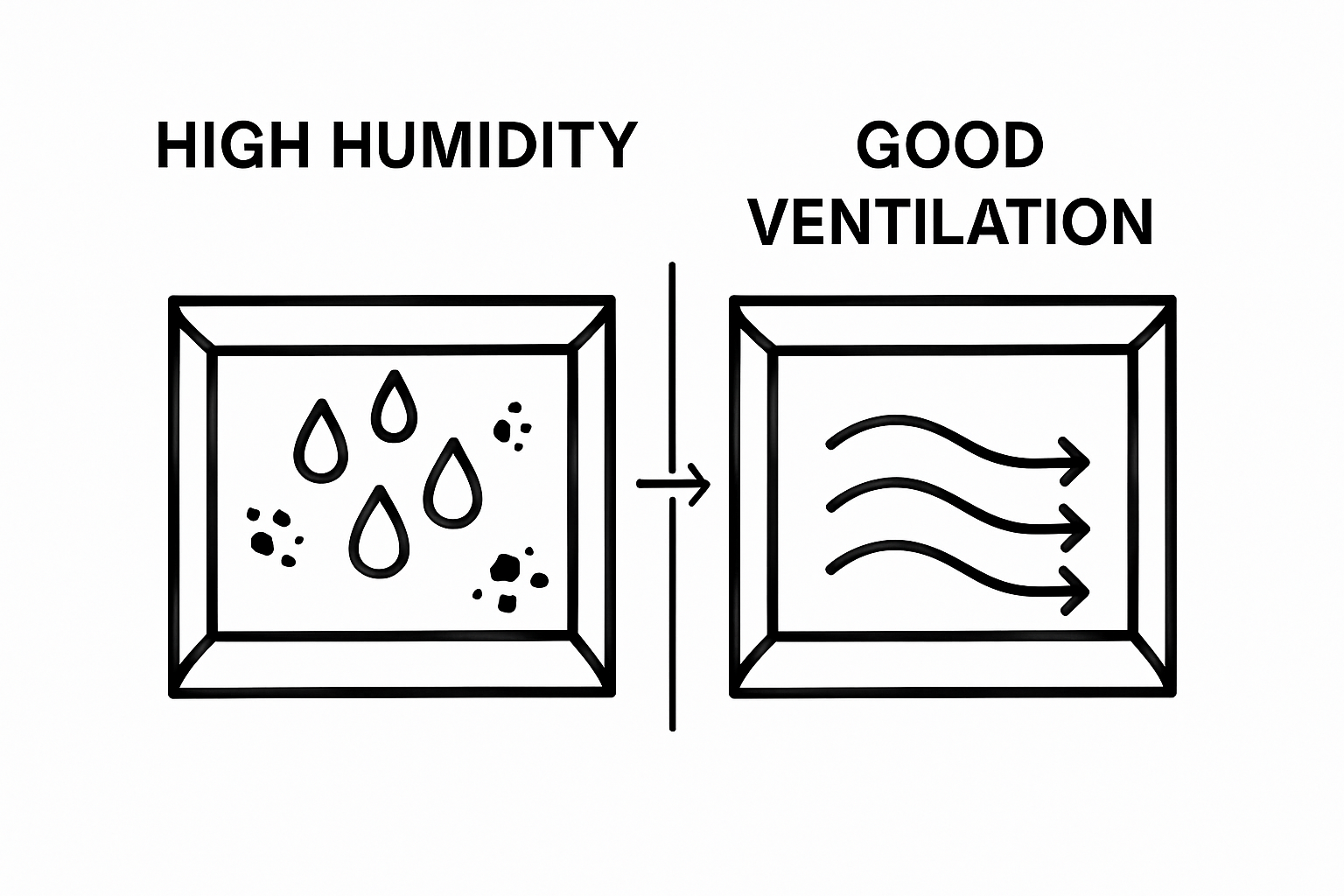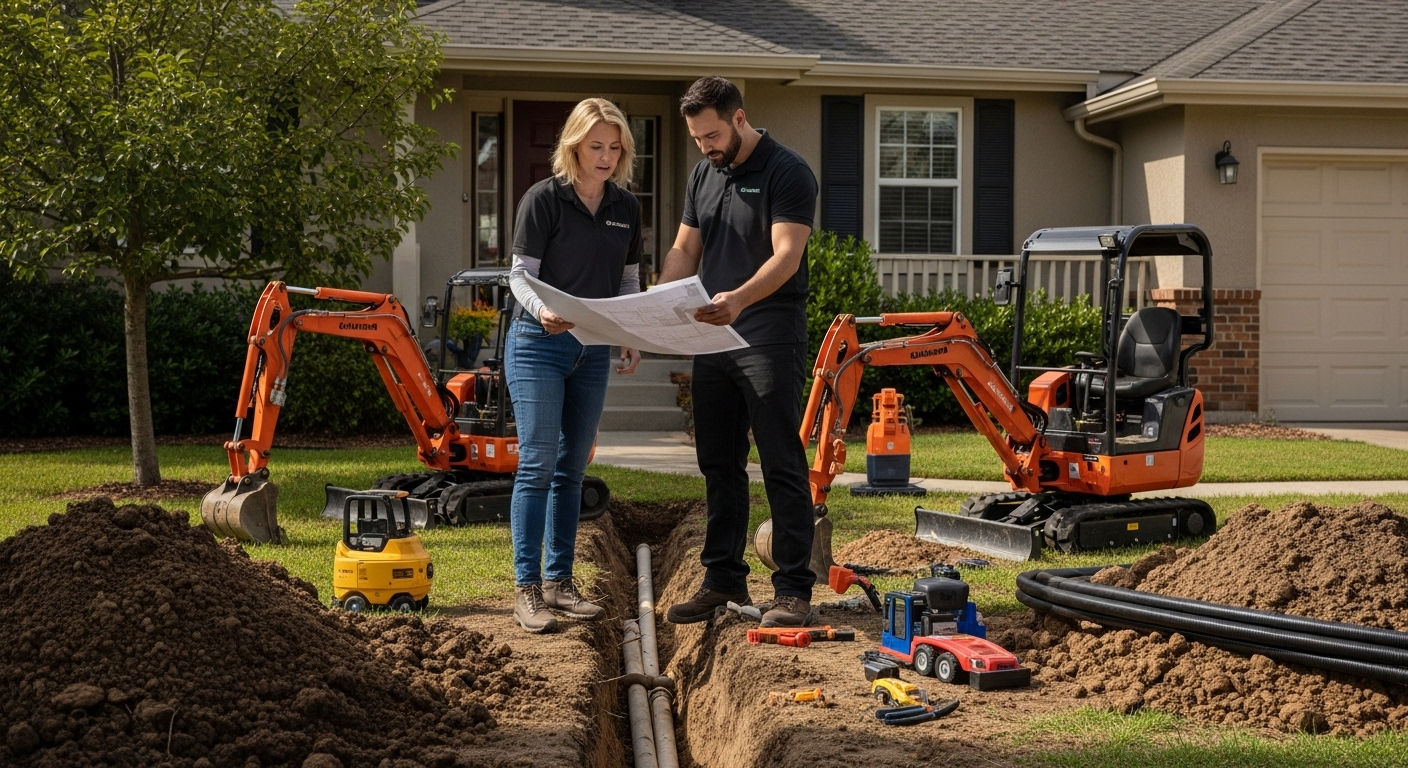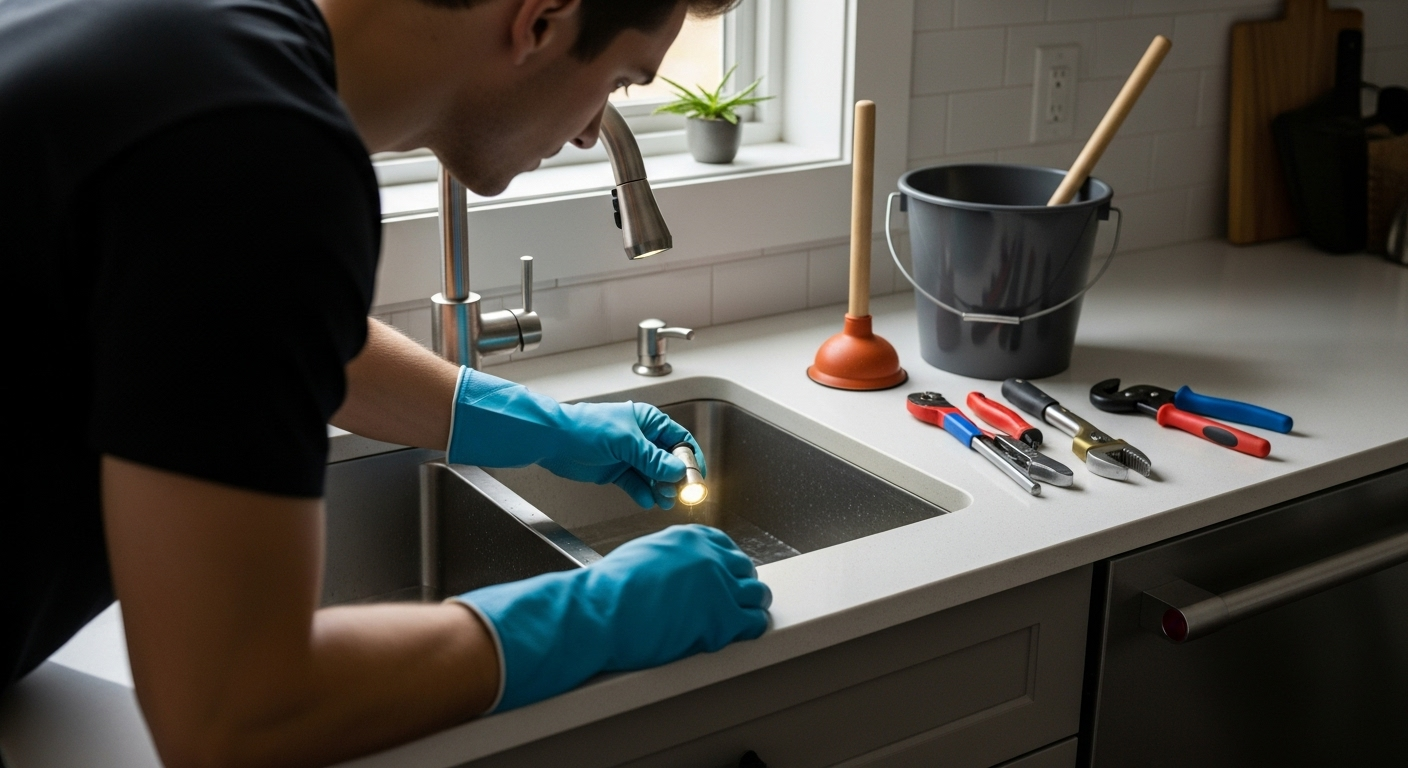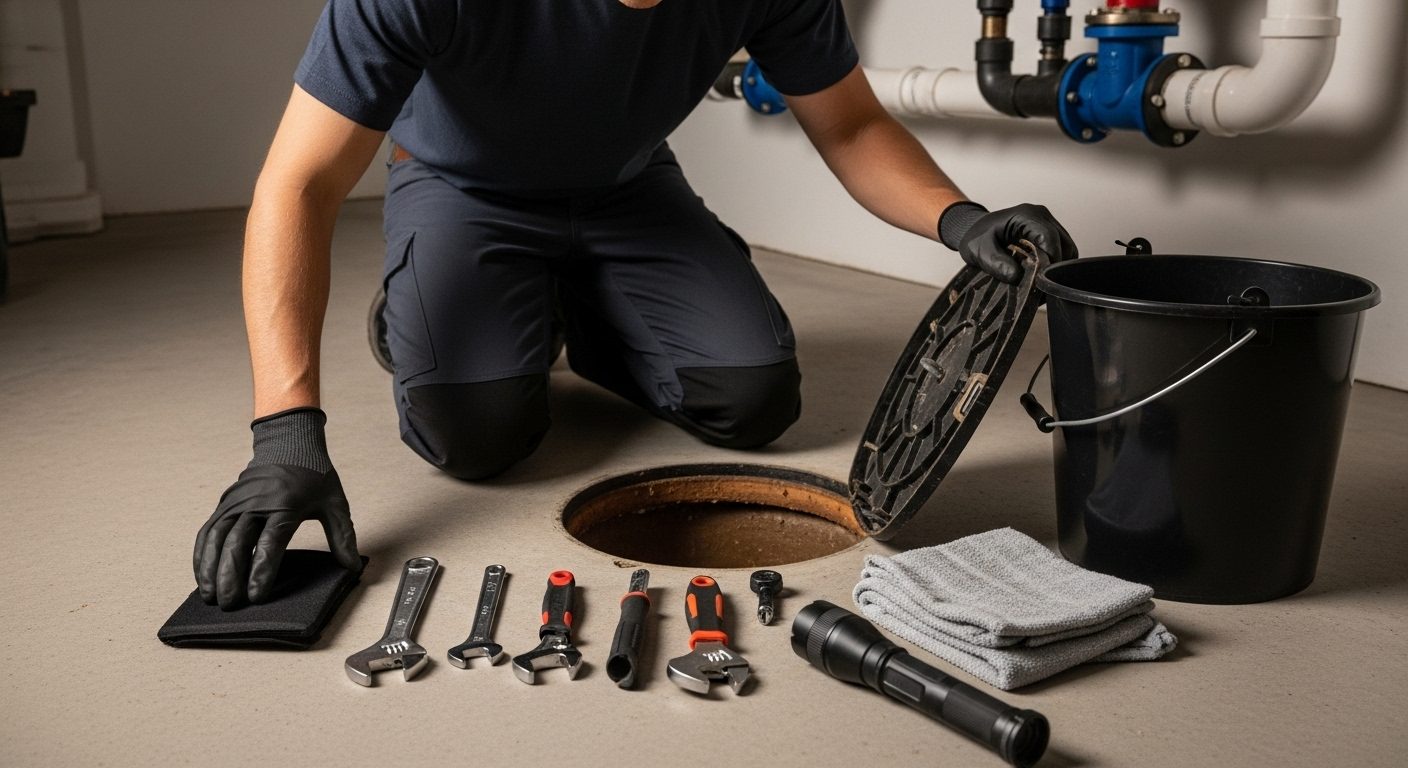Understanding the Musty Smell in Basement: Causes and Effects

Basements are notorious for being damp and uncomfortable, but nothing signals a bigger problem like that stubborn musty smell. Most people assume it is just stale air or an old building, yet the real culprit is far more active than you might think. Mold and mildew release microscopic particles into the air that not only create an unpleasant odour but also pose health risks and can even damage your home’s structure. Studies show that relative humidity above 60 percent is all it takes to kickstart this hidden invasion . And the impact goes way beyond your nose.
Table of Contents
Quick Summary
| Takeaway | Explanation |
|---|---|
| Address musty smells immediately | Ignoring musty odors can lead to health hazards and structural damage in your home. |
| Moisture is the primary cause | Musty odors are usually the result of mold and mildew thriving in damp, poorly ventilated spaces. |
| High humidity levels encourage mold growth | Keeping relative humidity below 60% reduces the risk of mold infestations and musty smells. |
| Improve ventilation in basements | Enhanced airflow helps to dissipate moisture and prevents the accumulation of musty odors. |
| Identify and repair leaks promptly | Fixing leaks and cracks can eliminate the source of moisture and prevent musty smells from returning. |
What is a Musty Smell and What Causes It?
A musty smell is an unpleasant, dank odor typically associated with moisture, mold, and mildew in enclosed spaces like basements. This distinctive smell signals potential moisture problems and indicates an environment where fungal growth can thrive.
The Science Behind Musty Odors
Musty smells originate from microscopic organisms like mold and mildew that release volatile organic compounds (VOCs) into the air. These organisms require three primary conditions to grow: moisture, organic material, and minimal air circulation. Basements provide an ideal breeding ground because they often have high humidity, limited ventilation, and porous surfaces like concrete and wood that absorb moisture.
When mold spores encounter damp surfaces, they quickly multiply and produce metabolic byproducts that generate the characteristic musty odor. The smell is essentially a warning sign of potential fungal colonization and potential structural damage.
Common Sources of Musty Smells in Basements
Several factors contribute to musty odors in basement environments:
- Water Seepage : Cracks in foundation walls or floors allow groundwater to penetrate, creating consistent moisture
- Poor Ventilation : Limited air movement prevents moisture from evaporating
- High Humidity : Relative humidity above 60% encourages mold and mildew growth
- Organic Materials : Wooden structures, cardboard, fabric, and other porous materials provide nutrients for fungal development
Understanding these sources helps homeowners recognize and address potential moisture problems before they escalate into more significant issues like structural damage or health risks.
The table below summarises the most common sources of musty smells in basements, helping homeowners quickly identify potential problem areas in their own space.
| Source | Description |
|---|---|
| Water Seepage | Groundwater enters through cracks in foundation walls or floors |
| Poor Ventilation | Stagnant air prevents moisture evaporation |
| High Humidity | Relative humidity above 60% promotes mould and mildew |
| Organic Materials | Wood, cardboard, and fabrics provide nutrients for fungal growth |
| Porous Surfaces | Concrete and wood absorb and retain moisture easily |
Why is the Musty Smell in Basement Important to Address?
Addressing the musty smell in a basement is not merely about eliminating an unpleasant odor. It represents a critical indicator of potential health risks, structural damage, and long-term home maintenance challenges that require immediate attention.
Health Risks of Ignored Musty Environments
Mold and mildew growth associated with musty smells can trigger significant health problems . Prolonged exposure to mold spores and volatile organic compounds can cause respiratory issues, allergic reactions, and potentially more severe health complications. Individuals with pre-existing conditions like asthma or compromised immune systems are particularly vulnerable to these environmental hazards.
The microscopic spores released by mold can circulate through home ventilation systems, spreading potential health risks beyond the basement area. This means a seemingly isolated basement issue can impact the entire household’s air quality and overall wellness.
Structural and Property Damage Consequences
Beyond health concerns, persistent musty smells signal ongoing moisture problems that can cause substantial structural damage to your home. Continuous moisture exposure weakens building materials, leading to:
- Wood Rot : Wooden structural elements like floor joists and support beams can deteriorate
- Concrete Degradation : Foundation walls may develop cracks and lose structural integrity
- Insulation Compromise : Moisture can render insulation ineffective and promote further mold growth
- Property Value Reduction : Unaddressed moisture issues can significantly decrease home market value
Prompt identification and resolution of musty smell sources can prevent expensive repairs and preserve your home’s structural health.
The following table outlines different types of structural and health consequences associated with musty basement environments, allowing readers to see at a glance what is at stake if odours are ignored.
| Consequence Type | Example Impact |
|---|---|
| Health Risk | Respiratory issues, allergic reactions, immune suppression |
| Wood Rot | Structural deterioration of floor joists and beams |
| Concrete Degradation | Cracks and loss of foundation integrity |
| Insulation Compromise | Ineffective insulation and increased mould growth |
| Property Value Reduction | Decreased market value due to moisture problems |

How Humidity and Poor Ventilation Contribute to Musty Odors
Humidity and poor ventilation are fundamental factors that create an ideal environment for musty odors to develop in basement spaces. Understanding the intricate relationship between moisture levels and air circulation helps homeowners recognize and prevent these unpleasant conditions.
The Moisture Dynamics of Basement Environments
Relative humidity plays a crucial role in creating musty conditions . When humidity levels exceed 60%, the air becomes saturated with water vapor, providing the perfect breeding ground for mold and mildew. Basements are particularly susceptible because they are typically below ground level, surrounded by moist soil and with limited natural air exchange.
Concrete walls and floors act like sponges, absorbing moisture from the surrounding ground. This constant moisture infiltration creates a damp environment where water molecules accumulate on surfaces, creating condensation that feeds fungal growth and generates those characteristic musty smells.
Ventilation Challenges in Enclosed Spaces
Poor ventilation exacerbates moisture-related problems by preventing air circulation and moisture evaporation. In a typical basement, air becomes stagnant and trapped, unable to move and disperse accumulated humidity. This lack of air movement leads to several critical issues:
- Moisture Accumulation : Stagnant air cannot effectively carry away water vapor
- Temperature Variations : Cool surfaces create condensation points for moisture
- Limited Air Exchange : Minimal oxygen circulation prevents natural drying processes
- Organic Material Degradation : Trapped moisture accelerates decomposition of building materials
Effective moisture management requires a comprehensive approach that addresses both humidity control and improved air circulation.
 Homeowners must implement strategic ventilation solutions to interrupt the cycle of moisture buildup and prevent the development of musty odors.
Homeowners must implement strategic ventilation solutions to interrupt the cycle of moisture buildup and prevent the development of musty odors.
Key Health Risks Associated with Musty Smells in Basements
Musty smells are more than just an unpleasant sensory experience. They represent a serious potential health hazard that can compromise respiratory function, trigger allergic reactions, and create long-term wellness challenges for individuals exposed to these environments.
Respiratory System Complications
Prolonged exposure to musty odors can significantly impact respiratory health . Mold spores and volatile organic compounds released in damp environments can irritate and inflame lung tissues, leading to persistent respiratory symptoms. People with pre-existing conditions like asthma or chronic obstructive pulmonary disease (COPD) are particularly vulnerable to these environmental triggers.
The microscopic nature of mold spores allows them to penetrate deep into lung tissues, potentially causing inflammation, increased mucus production, and reduced lung function. Children and elderly individuals face heightened risks, as their respiratory systems are more sensitive to environmental contaminants.
Immune System and Allergic Responses
Musty environments can provoke complex immune system reactions that extend beyond simple respiratory irritation. Individuals may experience a range of allergic and inflammatory responses, including:
- Chronic Sinus Inflammation : Persistent nasal congestion and potential infection
- Skin Reactions : Rashes, itching, and dermatological complications
- Neurological Symptoms : Headaches, fatigue, and potential cognitive disruptions
- Immune System Suppression : Increased susceptibility to additional infections
These health risks underscore the importance of addressing musty odors promptly and comprehensively. Ignoring these environmental warning signs can lead to progressive health deterioration and potentially long-term medical complications for household occupants.
Understanding the Relationship Between Mold and Musty Odors
Mold and musty odors share an intricate biological relationship that goes far beyond simple environmental discomfort. These interconnected phenomena represent complex microbial processes that can significantly impact indoor air quality and structural integrity.
The Biological Origins of Musty Smells
Mold produces volatile organic compounds (VOCs) that generate the characteristic musty odor . These microscopic fungi release metabolic byproducts during their growth cycle, creating a distinctive smell that serves as an early warning system for potential moisture and environmental degradation. Different mold species produce unique chemical compounds, resulting in variations of musty odors that can range from earthy and damp to slightly sweet or pungent.
The musty smell emerges as mold colonies metabolize organic materials, breaking down cellulose, wood, fabric, and other carbon-based substances. This decomposition process not only generates odors but also progressively damages the materials supporting mold growth.
Mold Varieties and Their Olfactory Signatures
Not all molds produce identical odors, and their appearance can vary significantly. Some mold types create barely perceptible smells, while others generate intense, overwhelming odors that quickly permeate enclosed spaces. Basement environments provide ideal conditions for these microbial colonies due to:
- Consistent Moisture : Damp surfaces enable rapid mold reproduction
- Limited Ventilation : Stagnant air prevents natural drying
- Organic Material Abundance : Wood, fabric, and cardboard serve as nutrient sources
- Temperature Stability : Consistent cool temperatures support mold growth
Recognizing the intricate relationship between mold and musty odors empowers homeowners to identify potential environmental health risks before they become significant structural or wellness challenges.
Tackle Basement Musty Odours and Protect Your Home Today
Noticing a persistent musty smell in your basement? That unpleasant damp odour is more than a nuisance—it can signal hidden moisture problems, mould growth, and the risk of serious property damage or health issues, as explained in the article. You do not have to settle for living with this uncertainty. When moisture, poor ventilation, or hidden leaks threaten your air quality and the value of your home, it is time to call on the experts.

Choose peace of mind with DrainWorks Plumbing. Our award-winning Toronto plumbers have over 30 years of experience and specialize in waterproofing, repairing hidden leaks, and preventing the mould and mildew that cause musty smells. Check out our homepage to request your same-day assessment and see how we can help you breathe easier. Book now to prevent further damage and ensure your basement stays clean, dry, and safe for your family.
Frequently Asked Questions
What causes a musty smell in the basement?
A musty smell in the basement is primarily caused by moisture, mold, and mildew growth. These organisms flourish in damp conditions and release volatile organic compounds (VOCs) that create the distinct odor.
How can I eliminate musty odors from my basement?
To eliminate musty odors, it’s important to address the root causes: improve ventilation, reduce humidity levels below 60%, and remove any organic materials that can promote mold growth. You may also consider using dehumidifiers or air purifiers to help manage moisture.
Are musty odors in basements harmful to health?
Yes, musty odors can be harmful to health. Prolonged exposure to mold spores and VOCs can lead to respiratory issues, allergic reactions, and other health complications, particularly for individuals with asthma or weakened immune systems.
How does humidity contribute to musty smells in basements?
Humidity creates optimal conditions for mold and mildew growth. When humidity levels exceed 60%, the air is saturated with moisture, which combined with lack of ventilation, allows musty odors to develop and persist in basement spaces.













